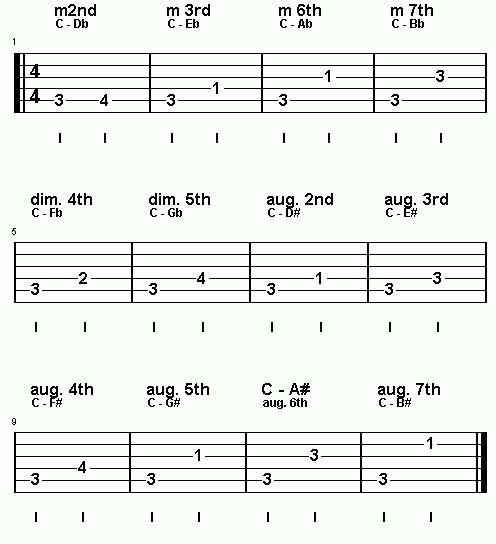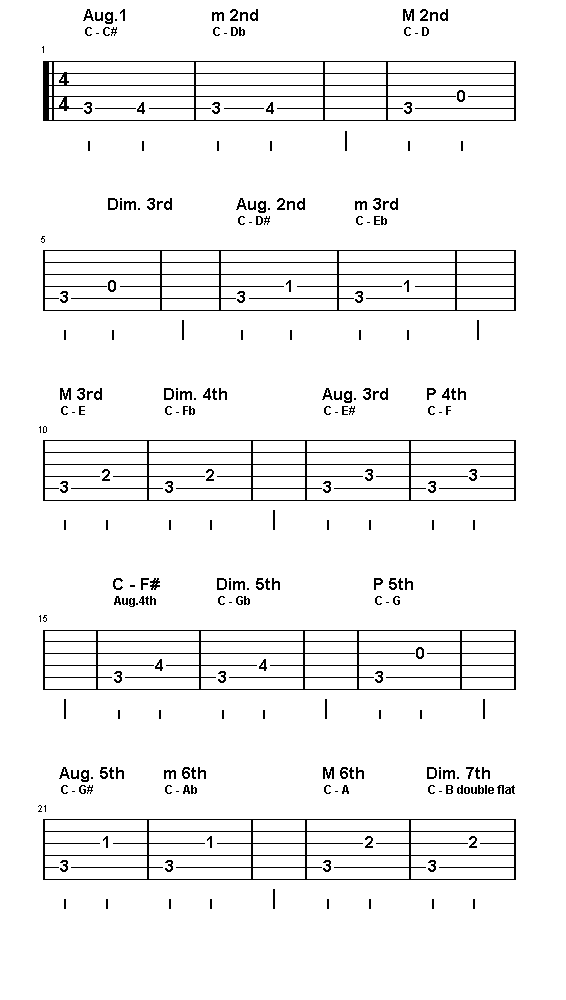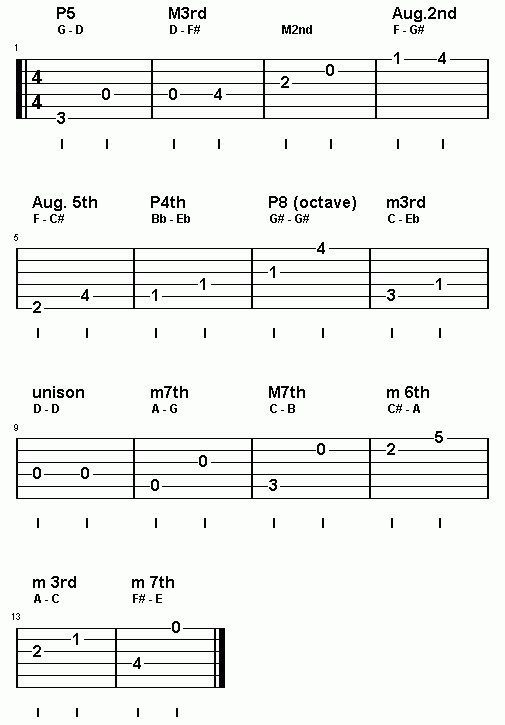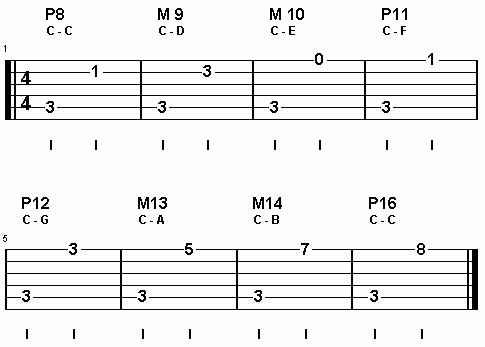There are notes between the notes of the major scale. Notes can also have 2 names. For example, the D# is also an Eb note. Some intervals can also have two names. These intervals are called enharmonic equivalents.
The intervals in the major scale are either perfect or major intervals. The intervals outside of the major scale are minor, diminished, or augmented.
A major interval lowered one semi-tone (flatted) becomes a minor interval.
C-D is a major 2nd C-Db is a minor 2nd
C-E is a major 3rd C-Eb is a minor 3rd
C-A is a major 6th C-Ab is a minor 6th
C-B is a major 7th C-Bb is a minor 7th
|
Minor, Diminished & Augmented Intervals |
|
|
Minor, Diminished & Augmented Intervals |

A perfect 4th or 5th interval lowered one semi-tone (flatted) becomes a diminished interval.
C-F is a perfect 4th C-Fb is a diminished 4th (sometimes E must be called Fb)
C-G is a perfect 5th C- Gb is a diminished 5th
|
Enharmonic Equivalent Intervals |

A perfect interval or a major interval raised one semi-tone becomes an augmented interval.
C-D# is an augmented 2nd C-E# is an augmented 3rd
C-F# is an augmented 4th C-G# is an augmented 5th
C-A# is an augmented 6th C-B# is an augmented 7th
|
Intervals in Various Keys |

Some intervals are usually named by their enharmonic equivalents. C to B# is most often C to C (which is an octave). C to E# would generally be thought of as C to F which is a perfect 4th.
Traditional ear training focuses mainly on the major and perfect intervals. Minor, augmented, and diminished intervals carry less importance with most teachers. Although it is better to immediately recognize many intervals, I think that the most important intervals are the major and perfect ones.
If the major and perfect intervals are memorized, the other intervals are easier to recognize.
|
Compound Intervals |
